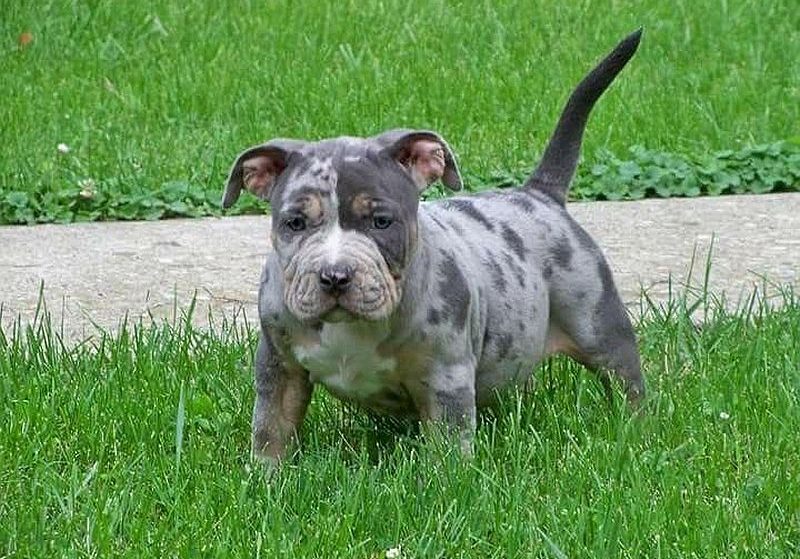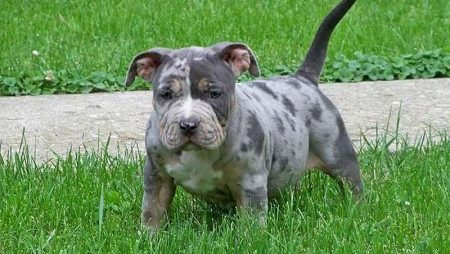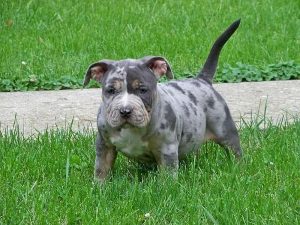

What’s the Deal with Merle Pit Bulls?
As all pit bull sweethearts know, these attractive poppers arrive in a rainbow of tones and examples, from the excellent blue to the striking streak. Yet, there’s one look crawling into increasingly more that has individuals talking, both decidedly and contrarily.
Believe it or not: We’re talking merle pit bulls.
We realize the debate is furious, however since there’s a ton of jabber about them, we needed to present to you the scoop.
Underneath, we’ll examine what merle pit bulls are and separate what’s going on with all the fight.
Key Takeaways: What’s the Deal with Merle Pit Bulls?
Merle pit bulls are just pit bulls who show the merle shading change. The merle shading design changes significantly, however it ordinarily makes canines have fixes and whirls of both full and weakened tones.
Tragically, the merle quality can likewise cause different changes in a canine’s appearance and wellbeing. Here and there, the quality additionally influences things like skin hue or eye tone, however, it can likewise cause issues with a canine’s visual perception and hearing.
Actually, as indicated by the UKC breed standard, pit bulls ought not to show merle coats. Notwithstanding, there are still a lot of these strangely-hued sweeties accessible for individuals who extravagant this coat design.

What Is a Merle Pit Bull?
A merle pit bull is actually what the name depicts: A pit bull in the merle coat design. There’s no exceptional benefit or advantage that accompanies the shading, other than the merle’s broadly attractive look.
For those new to canine coat designs, merle fur garments regularly show an inconsistent appearance with different segments of weakened and completely pigmented colors, normally comprising of shades of dark or red specked or twirled over blue and white.
Otherwise called dapple, merle is most regularly found in Australian shepherds, Shelties, and Catahoula panther canines, yet there are numerous other merle canine varieties out there to investigate if the example intrigues you.
However delightful, merle is somewhat of a dubious example because of the quality that causes the coat design. As well as changing a canine’s tone, the merle quality can influence everything from the shading of your canine’s skin to his hearing and vision. Insane, correct?
More awful, your canine can be a transporter of the merle quality without the wild coat design (known as the “secretive merle” wonder).
Why’s this something terrible? Since two canines with the merle quality ought to never be reared together to stay away from genuine confusions. These “twofold merle” posterity are in danger of being conceived hard of hearing or with genuine eye issues.
In light of these covered up or thereabouts called “apparition” or “enigmatic” merles, hereditary testing before rearing is an unquestionable requirement to stay away from issues.
How Might You Tell a Merle Pit Bull from a Brindle?
Telling a merle pitbull separated from a mottle pittie is moderately simple since they’re immensely unique coat designs. Canines with streak designs look somewhat like tigers, with an earthy colored base and dark striping, while merles highlight a generally speaking splotchy look.
The two examples happen in pit bulls, however, spot pit bulls are undeniably more normal.
Eye tone is another tell here, with blue eyes or bi-shading eyes now and then found in merles. This characteristic isn’t ordinarily seen in streaks.
Is Merle a Natural Coat Color for Pit Bulls?
ow, we think all doggos are attractive and merit midsection rubs, however with the ascent in merle pit bulls, numerous individuals are considering what the authority word is about them from show ring circles and on the off chance that they can be entered in the variety vault.
With merle pit bulls, this is an ill-defined situation. Why? Since certain individuals confound the American pit bull terrier with other domineering jerk breeds.

Per the UKC breed standard for the American pit bull terrier, merle is precluded alongside albinism. Other than that, all tones, coat examples, and shading blends are permitted. The comparative American harasser is likewise prohibited in the merle design, per the UKC breed standard.
Presently, the American pit bull terrier isn’t perceived by the AKC, however, their cousin, the American Staffordshire terrier, is. Pointlessly, “pitbull terrier” is recorded as another name for these in the variety outline.
The American Staffordshire terrier is allowed in all tones and examples, per the AKC standard, including parts or fixed. Canines that are more than 80% white, dark and tan, or liver are viewed as not exactly ideal in the authority standard.
Quick version: Officially, merle is a prohibited shading in American pit bull terriers and isn’t normally happening, yet comparative harasser breeds may have the example and still be enlisted.
Does Merle Color Cause Health Problems?
Canines who have just a solitary duplicate of the merle quality once in a while experience the ill effects of deafness and visual deficiency, however, the twofold merles (those with two duplicates of the quality) are at more danger of deafness, absolute visual deficiency, and other eye issues because of an absence of skin color.
This absence of skin color can likewise put them at a high danger of skin disease or sun consumption.
On the off chance that your merle doggy’s folks weren’t hereditarily tried before rearing, it’s a motivation for concern. Not because we figure hard of hearing or visually impaired canines aren’t wonderful, but since eye and skin issues can be excruciating for your pooch and costly for you to treat over the long haul.